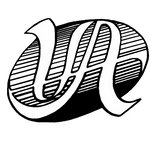
We Fought Through by James Dietz
Often overlooked in Operation Overlord is that, after opening the critical Vierville Draw, the 116th Infantry Regiment, elements of the 2nd Ranger Battalion and the 5th Ranger Battalion were to immediately turn west to relieve Colonel James Earl Rudder on Pointe du Hoc. A, B, and C Companies of his 2nd Ranger Battalion had been assigned the difficult task of climbing the heights there to destroy the German Artillery Battery that threatened the landings on both American beaches.
Planners however failed to accurately anticipate the strength of the German defenses defending the Vierville Draw and the only paved road leading from Omaha Beach. The first wave of the 29th Division’s 116th Infantry Regiment struggled to advance as described in the story of the Bedford Boys. Finally reaching the coast road, the 116th did not have sufficient combat power to begin their advance to relieve Rudder’s Rangers. The 5th Rangers, under Lieutenant Colonel Max Schneider, were in better shape but feared a German counterattack to drive the Americans back to the beach. As a result, the Rangers were ordered to go into defensive positions for the night.
Around 1700, LTC Rudder established radio communication and confirmed the 2nd Ranger mission had been achieved but added “Try and fight through to us!” The guns had been neutralized, but at a heavy cost, leaving the Rangers behind German lines and in need of immediate support. The original orders for the 29th Division and Rangers clear the Vierville Draw and advance to Pointe Du Hoc now had greater meaning than ever.
At 0700 on 7 June, a Task Force led by the 29th Division’s 116th Infantry Regiment, the 5th Rangers, and the 2nd Rangers began their advance west. They would be followed by eight tanks from the 743rd Tank Battalion. By noon, the relief had reached St. Pierre du Mont where the German resistance including artillery support stopped their advance by early evening. While most of the task force was ordered to withdraw to reinforce the Vierville Draw defenses for another night, the 5th Rangers Headquarters remained forward to hold the line until morning. When darkness finally set in, several Rangers slipped through the German lines surrounding Point du Hoc. Reaching Colonel Rudder, they left him a telephone and assurance that relief would be there the next day.
At the Headquarters of the 29th Division, plans to continue the attack west were finalized. The Rangers would advance with the coast on their right, and the 116th Infantry would proceed down the Coast Road, supported by tanks from the 743rd Armor Battalion that would sweep in from the south. As the attack started, recognizing the overwhelming odds of the American Task Force, German Commander Oberstleutnant Fritz Ziegelmann, ordered his forces to withdraw further west to make a stand at Grand Camp. By late morning of 8 June, the American report went out, “We fought through.”
There was a brief, but exuberant reunion before the Twenty-Niners and Rangers continued their advance west. The wounded Rudder and surviving Rangers received much needed medical attention and resupply before withdrawing from the sacred ground where another Ranger legacy was born.
